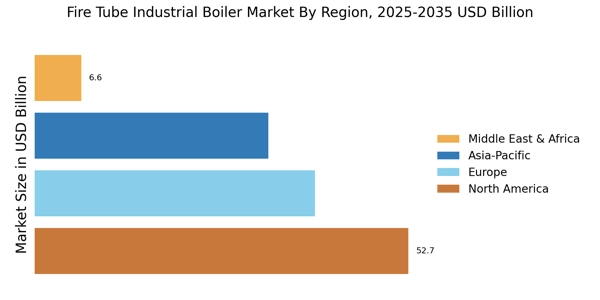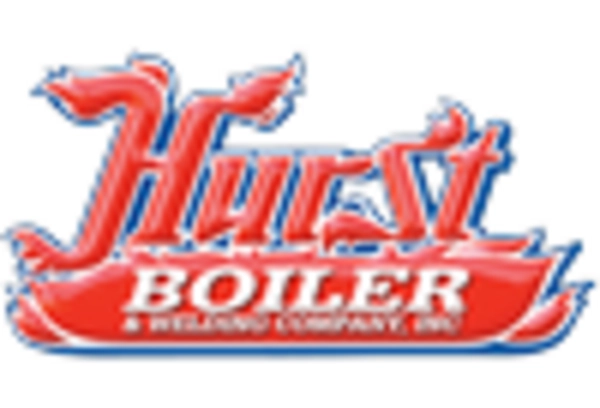Rising Energy Costs
The persistent rise in energy costs is a significant factor influencing the Fire Tube Industrial Boiler Market. As energy prices fluctuate, industries are compelled to seek more efficient heating solutions to mitigate operational costs. Fire tube boilers, known for their fuel efficiency, are increasingly favored as they can help reduce energy consumption. Market analysis suggests that the demand for fire tube boilers may increase by approximately 6% in response to rising energy costs, as companies prioritize investments in technologies that promise long-term savings.
Technological Advancements
Technological advancements in boiler design and operation are driving the Fire Tube Industrial Boiler Market. Innovations such as enhanced heat exchange systems and automated controls are improving the efficiency and performance of fire tube boilers. Recent studies indicate that these advancements can lead to energy savings of up to 20%, making fire tube boilers more attractive to industries seeking cost-effective solutions. As technology continues to evolve, the market is expected to see a surge in demand for modernized fire tube boilers, which could potentially reshape the competitive landscape.
Increasing Industrialization
The ongoing trend of industrialization across various sectors appears to be a primary driver for the Fire Tube Industrial Boiler Market. As industries expand, the demand for efficient heating solutions rises. Fire tube boilers, known for their reliability and efficiency, are increasingly adopted in manufacturing, food processing, and chemical industries. According to recent data, the industrial sector's growth is projected to contribute significantly to the demand for fire tube boilers, with an estimated increase of 5% annually. This trend suggests that as industries seek to optimize operations and reduce energy costs, the fire tube boiler market will likely experience substantial growth.
Expansion of the Construction Sector
The expansion of the construction sector is contributing to the growth of the Fire Tube Industrial Boiler Market. As new buildings and infrastructure projects emerge, the need for reliable heating systems becomes paramount. Fire tube boilers are often selected for their ability to provide consistent heating in large-scale applications. Recent data indicates that the construction industry is expected to grow by 4% annually, which could lead to a corresponding increase in the demand for fire tube boilers. This trend suggests that the market will likely benefit from the ongoing construction boom.
Focus on Environmental Sustainability
The heightened emphasis on environmental sustainability is influencing the Fire Tube Industrial Boiler Market. Industries are increasingly required to comply with stringent environmental regulations, which necessitate the adoption of cleaner technologies. Fire tube boilers, which can be designed to operate on renewable energy sources, are becoming more appealing. The market data indicates that the shift towards sustainable practices could lead to a 7% increase in the adoption of fire tube boilers over the next five years. This trend suggests that manufacturers are likely to innovate and enhance the efficiency of fire tube boilers to meet environmental standards.


















Leave a Comment